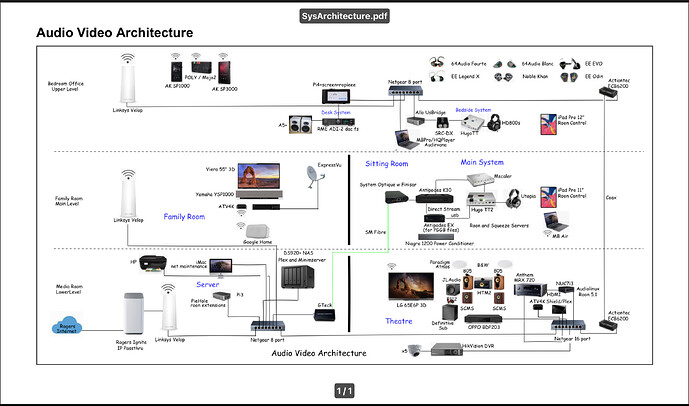Thank you for sharing but for comparison, it seems some important details are missing. Maybe it was mentioned somewhere else, but what fiber sounds so bad in your setup? I understand instead of using one Ethernet cable direct to the server, two cables must have been used with the fiber chain in between, likely very close to the server.
For context, as it stands, above setup cannot be connected to an Oladra or any Antipodes server without an SFP cage. Since you might try a DAC cable, it would be good to know that it should be done as the last connection into a server because as far as I understand only in this configuration have a handful users reported very good results when connected directly to the SFP (+) in the server (so not FMC - DACcable - FMC - Ethernet cable - server).
Nick, I suppose also the AOC cable you tried before in your setup yielded equal bad results as the fiber mentioned above? It also makes me wonder, in the fiber connection, if the used FMCs were (2) eRs, Sonore Optical modules, or something like two cheap boxes from Amazon ? And what specific SFP optical modules were used in the FMCs, and what DC power was connected? since we all know this will influence SQ.
I apologize for the confusion, but it’s difficult to understand why fiber, also as mentioned by the topic creator, has such negative connotations without more specific details.
